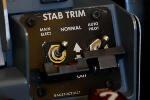MIflyer
1st Lieutenant
From Aviation Week:
Boeing's efforts to keep 737 Next Generation and MAX training as similar as possible included limiting external discussion of the maneuvering characteristics augmentation system (MCAS) as early as 2013, as well as an aggressive lobbying effort to dissuade Lion Air from requiring simulator sessions for its pilots, new documents released by the manufacturer reveal.
The documents, comprising external and internal emails and internal instant message exchanges, underscore the priority Boeing placed on positioning the MAX as nearly the same as its predecessor, the 737 Next Generation (NG). They also offer some of the most compelling evidence yet that Boeing consciously chose less costly approaches over safer, more conservative ones during the MAX's development.
Boeing determined early on that ensuring 737 pilots could transition to the MAX without simulator time would be a huge cost advantage when pitching the model to customers. It also realized that regulators could consider some of the MAX's new features as too much to cover in computer-based training (CBT). The MCAS, a flight control law that commands automatic stabilizer movements in certain flight profiles, was chief among them.
A version of the MCAS was developed for the 767 tanker program, "but treated as analogous function, as a speed trim-type function," a Boeing document summarizing a June 2013 MAX program meeting said. "If we emphasize MCAS is a new function there may be a greater certification and training impact."
Boeing's solution: refer to the MCAS externally as an addition to the 737 Speed Trim, not by its name.
Boeing's efforts to keep 737 Next Generation and MAX training as similar as possible included limiting external discussion of the maneuvering characteristics augmentation system (MCAS) as early as 2013, as well as an aggressive lobbying effort to dissuade Lion Air from requiring simulator sessions for its pilots, new documents released by the manufacturer reveal.
The documents, comprising external and internal emails and internal instant message exchanges, underscore the priority Boeing placed on positioning the MAX as nearly the same as its predecessor, the 737 Next Generation (NG). They also offer some of the most compelling evidence yet that Boeing consciously chose less costly approaches over safer, more conservative ones during the MAX's development.
Boeing determined early on that ensuring 737 pilots could transition to the MAX without simulator time would be a huge cost advantage when pitching the model to customers. It also realized that regulators could consider some of the MAX's new features as too much to cover in computer-based training (CBT). The MCAS, a flight control law that commands automatic stabilizer movements in certain flight profiles, was chief among them.
A version of the MCAS was developed for the 767 tanker program, "but treated as analogous function, as a speed trim-type function," a Boeing document summarizing a June 2013 MAX program meeting said. "If we emphasize MCAS is a new function there may be a greater certification and training impact."
Boeing's solution: refer to the MCAS externally as an addition to the 737 Speed Trim, not by its name.

